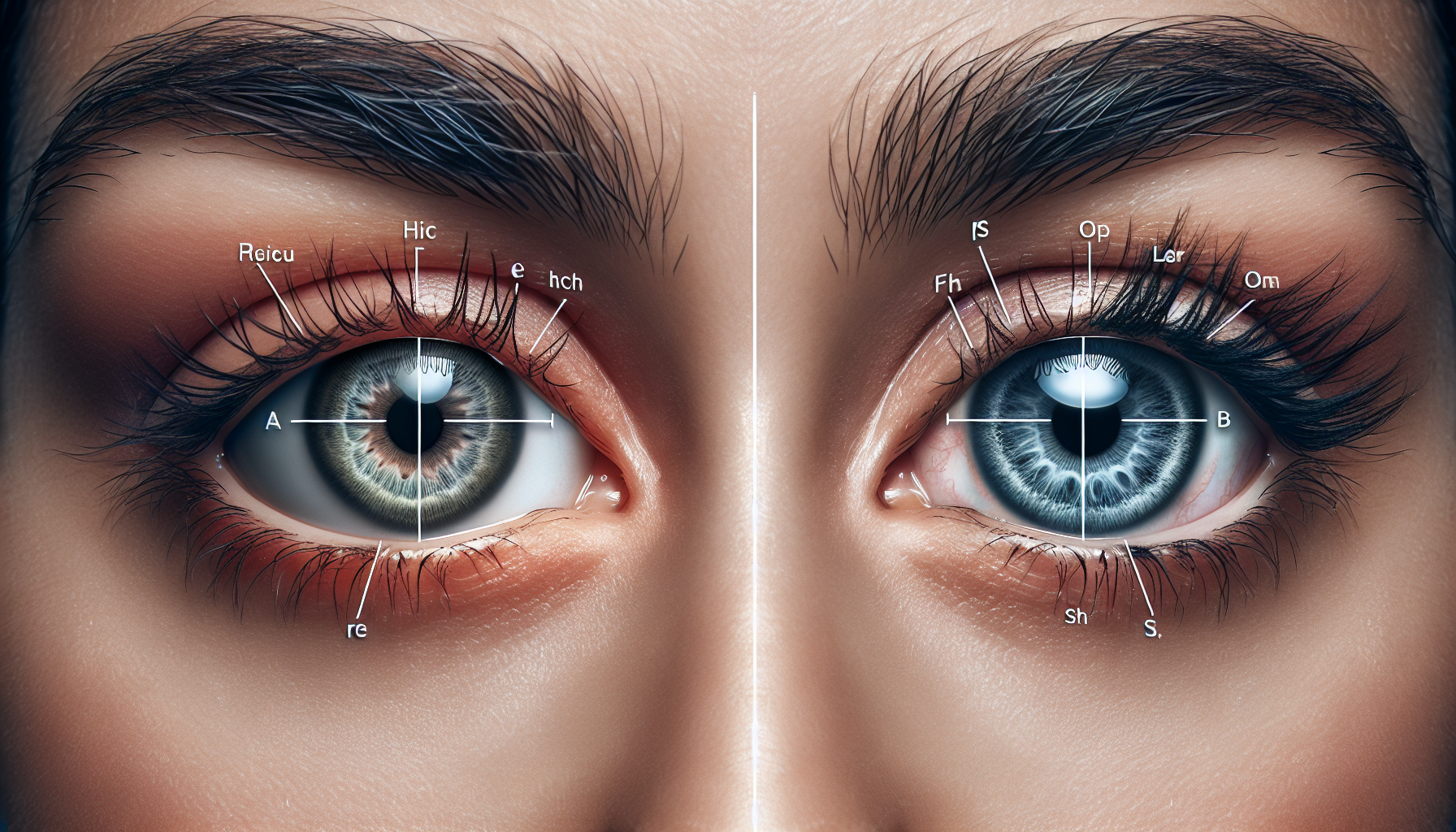Understanding Common Eye Conditions: Astigmatism and Myopia
One’s vision can be significantly affected by refractive errors, which are rooted in eye structure irregularities. Among the most common refractive errors are astigmatism and myopia. These two conditions often coexist, making it difficult to distinguish between them. Despite their similarities, they each have unique characteristics that distinguish them.
Comprehending Astigmatism and Myopia
Much like fingerprints or snowflakes, every individual’s eyes are unique. This uniqueness extends to the shape and size of the eyes, which can, in some instances, impair our eyes’ functionality. Astigmatism and myopia are two such conditions that can impact vision. Early detection through eye exams allows eye health professionals to manage or improve vision.
Multiple corrective measures exist, including eyeglasses, contact lenses, and laser eye surgery. Understanding how your eyes affect your visual ability is a key step towards finding the most comfortable vision correction solution for you.
Grasping the Dynamics of Refractive Errors
Refractive errors result from an irregular eye shape, leading to vision problems. Each part of the eye has a specific function, and any deviation from the norm can impact its functionality, thereby affecting vision and overall eye health.
Refractive errors are vision issues that arise from how the eye refracts or bends light. Light plays an integral role in our vision, passing through various eye parts and being interpreted in the process. The journey of light through our eyes starts with the cornea, the outer layer. Any error in how light passes through this layer is a refractive error.
Astigmatism Explained
Astigmatism is a refractive error that can cause both near and distant vision problems. This condition arises when the lens or cornea has an irregular or cylindrical shape. It’s relatively common to have minor astigmatism since a perfectly round eye shape is rare. However, moderate to severe astigmatism can cause noticeable symptoms and require vision support.
Common astigmatism symptoms include headaches, eyestrain, eye irritation, difficulty with night vision, and squinting to focus vision.
Decoding Myopia
Myopia, also known as nearsightedness, refers to clear vision of close objects while distant objects appear blurry. This condition often develops during childhood and usually stabilizes between the ages of 20 and 40.
Implementing myopia control measures as early as ages 4 to 6 is crucial as myopia is often diagnosed in childhood. Regular eye exams for children are essential for early eye health monitoring and effective myopia management.
Astigmatism and Myopia: The Differences
Shape: Astigmatism is when the lens or the front surface of the eye is irregular or cylindrical, whereas myopia results from an excessively elongated eyeball or an excessively curved cornea.
Vision Problems: Both conditions can cause blurred distance vision, but astigmatism can also lead to blurred near vision. Degenerative myopia can cause other eye complications, such as retinal issues that impact central vision.
Rarity: Astigmatism is the most frequent refractive error type, often occurring in a mild form that may not exhibit noticeable symptoms. Conversely, myopia, especially degenerative myopia, is becoming more prevalent. Nowadays, myopia-related vision changes are observed earlier in childhood and persist into adulthood.
Severity: The impact of astigmatism and myopia can vary based on the severity of the condition. However, high myopia poses more significant risks to both vision and eye health.
Lens Prescription: In a spectacle prescription, astigmatism is represented by a number in brackets, indicating its power in diopters, followed by a degree showing its orientation. For example, the prescription OD – 3.00 (-2) 90° for the right eye signifies myopia (nearsightedness) of 3 diopters and astigmatism of 2 diopters at an axis of 90 degrees.
Astigmatism can be categorized into weak (0 to 1 diopter), medium (1 to 2 diopters), or strong (values above 2 diopters) based on its magnitude.
Closing Thoughts
Understanding the differences between astigmatism and myopia is critical to addressing vision issues appropriately. While both conditions may affect our ability to see clearly, they have distinct causes and symptoms that necessitate different treatments. A comprehensive eye exam can help individuals determine whether they have astigmatism or myopia and receive appropriate treatment options such as glasses, contact lenses, or refractive surgery.
FAQs – Astigmatism vs. Myopia
Astigmatism and myopia are both common eye conditions. While astigmatism is the most prevalent refractive error, it often remains minor and symptom-free. Myopia, on the other hand, can progress into more complex forms, such as degenerative myopia, which presents additional challenges.
Astigmatism is the most common type of refractive error but often occurs in minor forms that may not manifest noticeable symptoms. Myopia can range from mild to severe, with degenerative myopia becoming more prevalent.
While there’s no complete cure for astigmatism, it can be effectively managed with glasses and contact lenses, which correct the resulting blurry vision. For those seeking a more permanent solution, refractive surgery is an option.
Nearsightedness results from an excessively elongated eyeball from front to back or irregularities in the cornea or lens shape, both of which are integral parts of the eye’s focusing mechanism.
Written by Aaron Barriga, the online marketing manager for Insight Vision Center. With a deep understanding of medical procedures and a keen interest in eye and vision health, Aaron enjoys sharing his knowledge and insights. He writes to inform readers about the latest eye care technology and other eye care-related topics, especially LASIK.


Comments are closed for this post.